In the northeastern part of the country, there is Tripura, which kinda is a super underrated state in the country because not a lot of people have the idea about the culture of this state and how vibrant it is. Though, if you began researching about this state, then you must have got to know some great things about their culture, mainly how people dress in this state, right? Well, today, we’re here to see the traditional dresses of Tripura a bit up close, so let’s just get to it right away.
Traditional Dress of Women in Tripura
1. Rignai
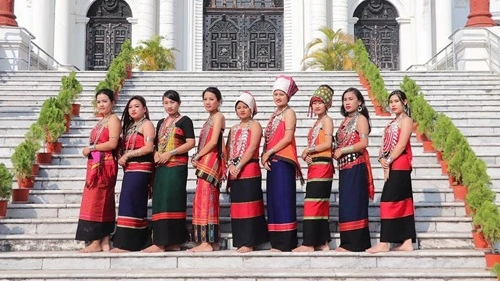
Rignai is a wrap-around kind of cloth that women tie from their waist, going down to the knees, or it may go down to the ankles. It is a kind of handloom, almost like a skirt, which is quite easy to wear. There are different kinds of Rignai designs and colours, different in every tribe in Tripura, or so. There are some patterns meant for occasions like weddings, while some serve the purpose of everyday use. One such type is Chamathwi Bar, which is predominantly white in colour, with maroon borders being specially meant for festival and marriage party use.
2. Risa
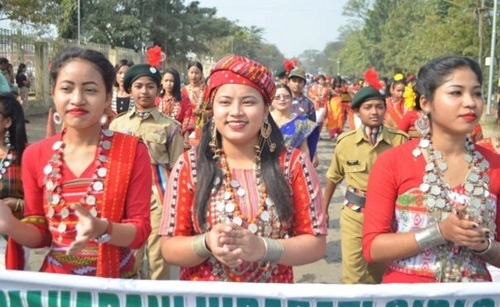
A Risa is a long piece of cloth that women cover their chest with or wear like a scarf. It usually goes with the Rignai. It also is generally handwoven and typically matches the design and colour of the Rignai. It is respect then elegance. But nowadays, many young women wear the Risa in substitution for tops or blouses. Yet the traditional Risa look is in big demand during cultural occasions.
3. Rikutu
The Rikutu is a longer piece of cloth that is draped over the entire upper body. Mostly worn by women in winter or for traditional gatherings, it has a saree-like aura, subtly elegant, you know? It can be worn over the Risa, or sometimes it completely dominates the Risa, depending on the occasion.
4. Rinanybaorok/Pachra (in Reang Style)
If you belong to the Reang or Bru tribe, you wear a cloth called Pachra. It’s kind of an Rignai, but more colourful and detailed. The Pachra is more or less that long from the waist down, just like the Rignai, you know, with this one, though, the whole idea is beauty and pride of the tribe, no doubt.
Traditional Dress of Men in Tripura
1. Kamchwlwi Borok
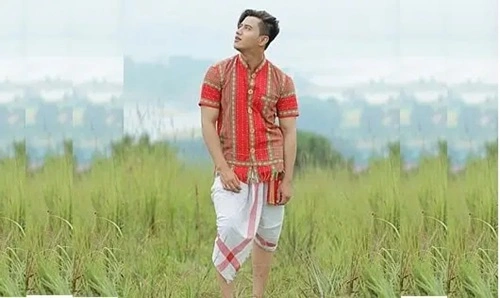
This bright and colourful shirt is such that the Tripuri men absolutely love wearing. Made of cotton or silk and without any buttons, it is very snug and is an ideal wearer keeping in mind the warm weather of Tripura. Red or bold designs, it could just be very useful for daily or festive use.
2. Rikutu/Rikutu Gamcha
It is a simple cloth, in fact, like a towel, that is tied around the waist, mostly by the males. Light, very easy to wear, and is an excellent everyday item. Different tribes would wear it in slightly different way although quite in concept.
3. Kubai
The Kubai is another shirt that is worn like a loose coat, which usually goes over the Rikutu. It’s very common in village life, an everyday dress that men put on themselves, irrespective of all other clothing.
4. Kamchi
On hot days, Tripuri men use a piece of cloth known as Kamchi to cover their heads. This is neither a fancy turban nor an elaborate piece, just a simple cloth to hang off the head to keep the sun off, and it does its work really great.
5. Chiren
During ceremonies or cultural festivities, men will sometimes adorn themselves with this cool headgear made from bamboo or cane. This is not something that happens every day, but it does add a super unique traditional touch.
Tribal Variations in Dress
The Reang (Bru) Tribe
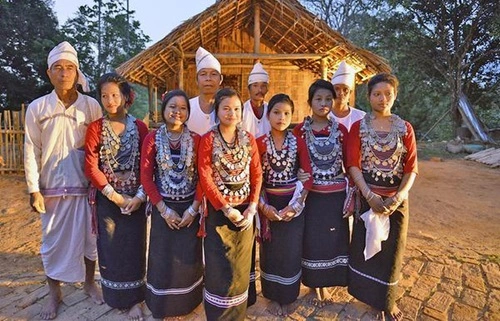
Reang women wear a Pachra, which, again, is similar to Rignai, and a Risa. The designs are very fine; they often reflect the social status of the wearer or the event for which it is worn. The men of the Reang tribe wear Rikutu, usually in special colours and patterns that reflect their pride as a tribe.
The Jamatia Tribe
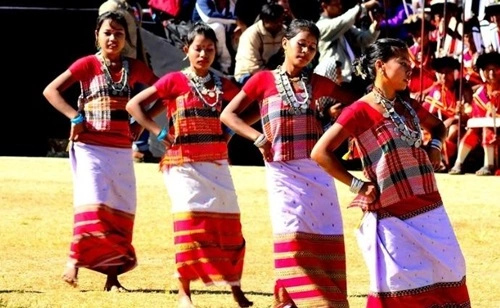
The Jamatia women adorn themselves in bright Rignais, predominantly red and black ones. Patterns are bold, beautiful, and striking, well, most of the time. Jamatia men wear Rikutu and some traditional shirts, tossing a turban into the mix on occasion for various religious functions.